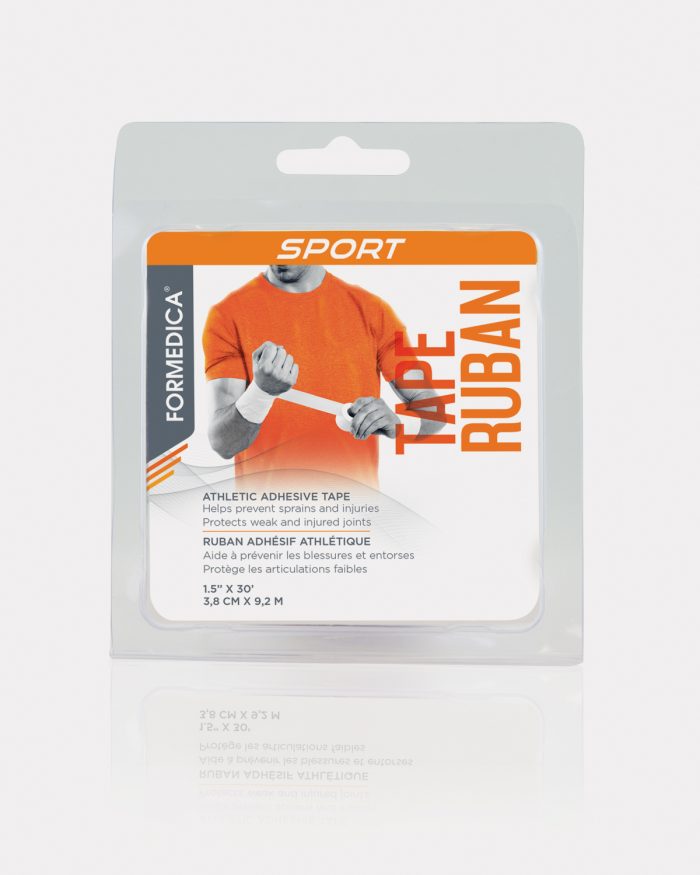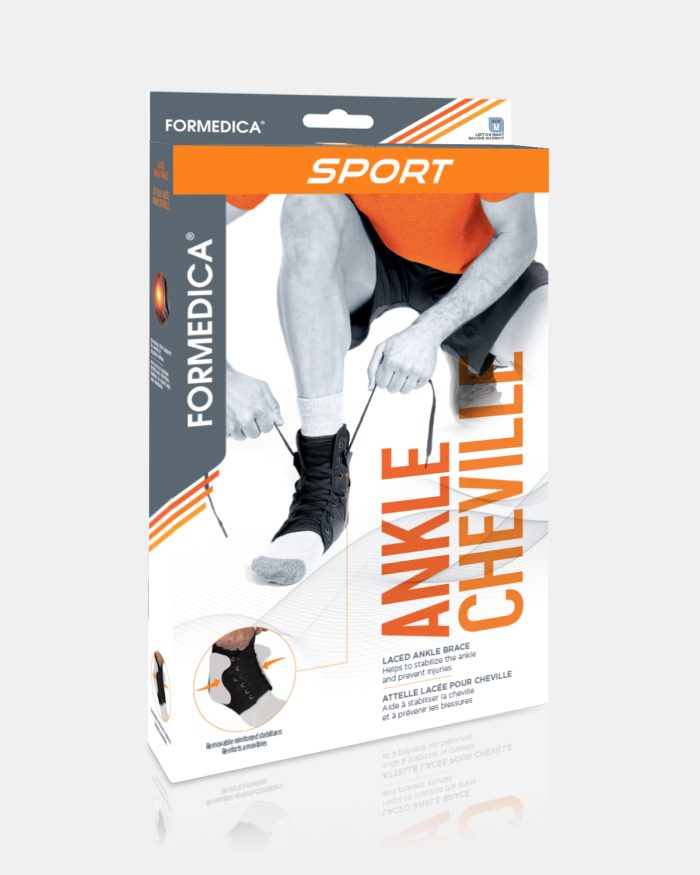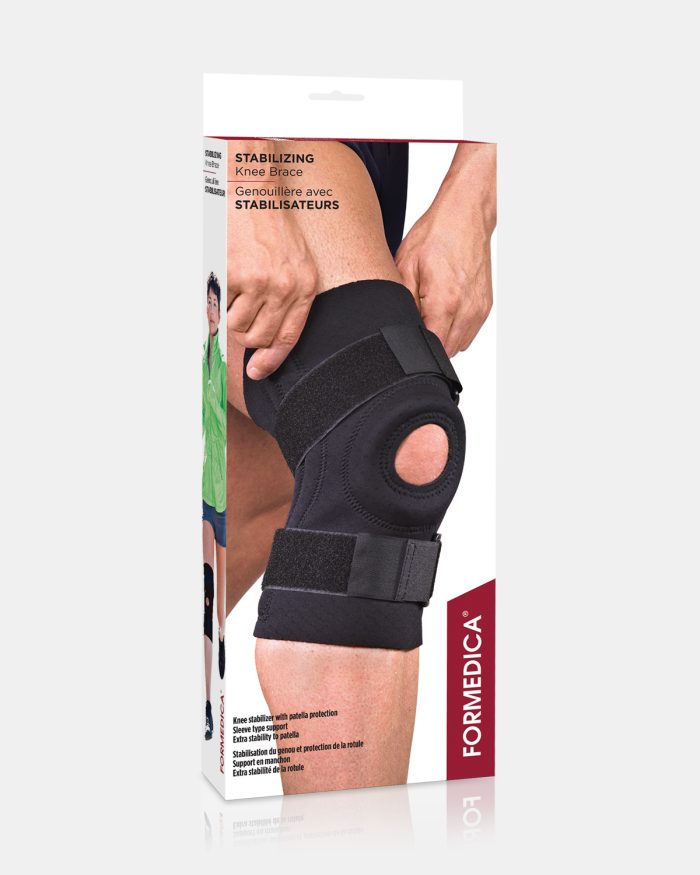An invalidating injury is always challenging – not only for the athlete who must stop training but also for the worker who finds himself into forced sick leave. Apart from the physical pain, inactivity and isolation that often result from an injury can take their toll on the patient’s whole lifestyle. Rehabilitation can be perceived as a long and treacherous road. Keeping up the spirit is no small task. Here is a 12 step program that offers a few suggestions and reference points to accelerate the healing process.
Stage One: Take the blow, and then take measures to heal
Immediately after the injury, follow these four steps to accelerate the healing process:
Time out
Obviously, activities that provoke pain and swelling are to be avoided. However, ceasing all activity is not a good idea. Just allow some rest to the injured area while continuing to stimulate it lightly.
Apply ice
Ice has many properties. It helps relieve pain, swelling and inflammation in the muscles, joints and other injured tissues. A form embracing ice pack should be applied as soon as possible for a 10 minute period. This should be repeated several times a day.
Contain the swelling
To reduce swelling the area should be supported by a compressing elastic bandage – though not too tight as you want to avoid impairing blood flow to the injury. If pain increases or if the area becomes numb, the bandage is probably too tight.
Elevate the injured area
Using gravity can reduce swelling by draining excess liquid. Therefore, elevating the injured area above the body is definitely advised, especially during the night.
These four steps can be repeated as needed.
Stage two: Keeping a positive outlook during rehabilitation
Previously, complete rest was the norm to heal an injury. However, people noticed the longer they remained still, the longer it took to regain mobility. We now know that laying still is harmful both physically and emotionally. So here are a few steps designed to strength the mind and body during the healing process.
Consult a physiotherapist
A physiotherapist’s support is often essential to re-educate your body properly. Rehabilitation therapy helps regain strength, power, agility and coordination, depending on the physiopathology of the lesion. All these factors combined stimulate tissue scarification, while monitoring the pressure applied to the injured joint during the sessions.
Stay active
Maintaining good form is important during the healing process, especially for high caliber athletes. Avoiding direct aggression on the lesion and promoting progressively more exercise maximise the scarification process while maintaining cardiovascular stamina. Swimming and aqua gym are the best form of exercise to begin with, gradually incorporating cardio and weight training as you get stronger.
Food intake = energetic outtake
When an injury restrains a patient’s mobility, especially athletes, they tend to either lose weight by loosing muscle tissue, or gain weight by gaining fatty tissue. So sometimes it’s a good idea to rethink our eating habits to adapt our body to its reduced activity level and to keep a healthy weight and muscle mass.
A recent study in Britain found that omega-3s can contribute to faster healing and regeneration of damaged nerves. Fish, nuts and flax oil are all rich in omega-3s.
Mental health
Sometimes recuperating from an injury can be as hard psychologically as it is physically. To suddenly become inactive can take a toll on our morale. To keep up the spirit, first try to eliminate the negative emotion left by the initial shock of the accident. This emotional stigma must be broken, because it often causes a rebound effect: fear of moving. Mental visualisation can be used to accelerate and enhance the healing process.
Whenever possible, it is important to go back to a context similar to where the accident occurred, especially if it happened at work. This helps dissociate the location from the mental distress of the incident. The ultimate goal is simply to regain full confidence in our capacities.
Stage THREE: I will avoid a relapse by any means
Make a plan
It is important to see a Doctor before initializing any rehabilitation program. For example, a broken ankle needs to be completely healed before going back in the gym. Consulting a certified trainer or sports medicine specialist to set up a secure plan is also a wise choice.
Longer warm ups
During recovery, you should spend at least 10 to 15 minutes warming up before jumping into any sport activity. A series of light, gradual exercises helps elevate body temperature, warm up muscles and ligaments, and increase blood flow, thus reducing the risk of injury.
Time to recuperate
Recuperation allows time to reduce muscle strain and damage. Never cease an activity suddenly. For example, if you are jogging, reduce your pace gradually before coming to a complete stop.
Listen to your body
At any time, at the smallest sign of pain, stop the movement that caused it. Caution is always the best bet when training or practising a sport that demands great efforts from muscles and joints.
Sources
http://www.sportsante.info/article/gardez-la-forme-pendant-votre-blessure
http://www.msport.net/newSite/index.php?op=aff_article&id_article=65
http://www.healthycanada.com/component/deeppockets/content/5691-se-remettre-da39une-blessure
http://repli.net/sujet/retour-douleurs/comment-se-remettre-dune-blessure-au-dos
http://www.performances-sportives.com/article-la-blessure-prevention-et-retablissement-50522724.html
http://www.lapresse.ca/vivre/sante/201201/17/01-4486732-mangez-du-poisson-pour-vous-remettre-de-vos-blessures.php


